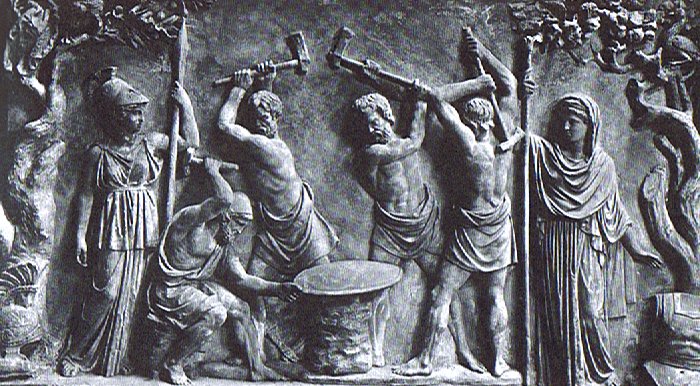Bb3.4
Metoro underlined (by using a Capital letter) the arrival of a new beginning
2 days after Kochab (*225), viz. at *227 (→
22 / 7 = π), which was at the head of Bootes and 12 days after
Arcturus (*215):
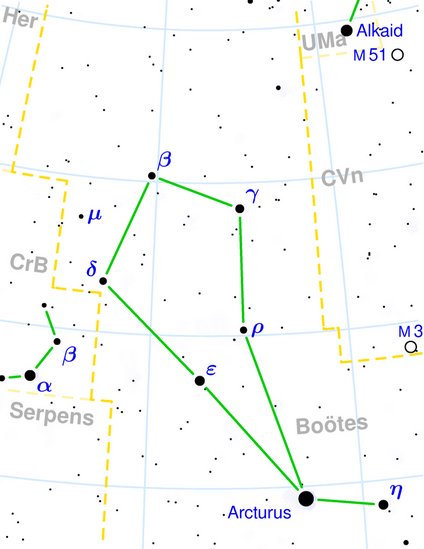
 |
 |
 |
 |
 |
|
Bb3-14 → π |
Bb3-15 |
Bb3-16 |
Bb3-17 |
Bb3-18 (96) |
|
ki te huaga |
tagata oho |
ki to toa |
ko te marama kua haga i ruga ia
ia |
ko te toa |
|
Haga. 1. Bay, fishing spot.
(Figuratively) he haga o te ákuáku, it is the
[evil] spirit's fishing spot, i.e. a place where
they hide waiting for people to fall under their
power. 2. To want, to love. Ku haga á i te vai,
I want water, I am thirsty. Vanaga. 1. Bay, strait,
anchorage, strand, beach. P Mq.: hana,
haka, small bay, creek, cove. 2. Work, labor,
employment, act, affair, creation, design, state,
maker, fashion, manufacture, occupation, profession;
to do, to make, to construct, to employ, to form, to
manufacture, to fashion, to found, to be busy with;
haga rakerake, crime; tagata haga ei mea,
mercenary; haga no iti, to plot mischief;
haga ke, to act contrary; haga takataka,
to disjoin; haga nui, difficulty, fatigue, to
weary; tuhi ki te haga, to give employment;
haga hakahou, to make over, to renew,
recovery; haga koroiti, to deal prudently;
haga nuinui ke, to overburden. P Pau.: haga,
to do, action, work, a deed. Mgv.: haga,
aga, work, labor. Mq.: hana, haka,
action, act, work, occupation. Ta.: haa,
work, to labor, to make. 3. Agreement, conduct,
liking, intention, desire, will; to resolve, to
permit, to endeavor, to tolerate, to be willing, to
wish, to approve; haga ihoiho, fixed desire;
haga mai, haga no mai, to agree, to
hearken favorably; tae haga, despite,
involuntary, to refuse, to renounce; noho
hakahaga, apathy. 4. = haka. Pau.:
haga = haka. 5. Mgv.: haga, a
fish. Mq.: haka, id. 6. Mgv.: haga, a
fishtrap. Sa.: faga, a fish-trap, bird-cage.
Ma.: hanganoa, a small basket for cooked
fish. 7. Mgv.: haga, a measure of a fathom.
Ta.: aa, to measure length. Mq.: aka,
ana, to measure with the arms. Ma.: whanga,
id. Churchill. Hagaava (haga 1 -
ava 2), entrance of a harbor. Hagahaga:
1. (haga 2), work. 2. hesitation, to
hesitate. Churchill.
Ruga. Upper part, higher part; when used
as a locative adverb, it is preceded by a
preposition: i ruga, above, on; ki ruga,
upwards, mai ruga, from above. When used
with a noun the same preposition is repeated:
he-ea te vî'e Vakai, he-iri ki ruga ki te Ahu ruga,
the woman Vakai went, she climbed Ahu Runga.
Ruga nui, high, elevated, lofty: kona ruga
nui, high place, elevated position, high office;
mana'u ruga nui, elevated thoughts. Vanaga.
High up; a ruga, above; ki ruga, on,
above, upon; ma ruga, above; o ruga,
upper; kahu o ruga, royal (sail); ruga iho,
celestial. Hakaruga, to accumulate, to draw
up. P Pau., Mgv.: ruga, above. Mq.: úna,
úka, id. Ta.: nua, nia, id.
Churchill. |
|
Oct 29 |
30 |
31 |
Nov 1 (15 * 15 +
80) |
2 (306) |
|
31 Bootis
(222.0),
YANG MUN (South Gate) =
α
Lupi
(222.1),
RIJL AL AWWA (Foot of the Barker) =
μ
Virginis
(222.5),
ο
Bootis (222.9) |
IZAR (Girdle) =
ε
Bootis
(223.0),
109 Virginis,
α
Apodis (223.3),
μ
Librae (223.8) |
Al Zubānā-14a (Claws) /
Visakha-16 (Forked) /
Root-3 (Badger)
ZUBEN ELGENUBI (Southern Claw) =
α
Librae
(224.2),
ξ
Bootis,
ο
Lupi (224.5) |
KOCHAB
(Kakkab) = β Ursae Min.
(225.0),
ξ Librae (225.7) |
KE KWAN (Cavalry Officer) =
β
Lupi
(226.3),
KE KWAN =
κ
Centauri (226.4), ZUBEN ELAKRIBI (Claw of the
Scorpion) =
δ
Librae
(226.8),
π¹
Oct.
(226.9) |
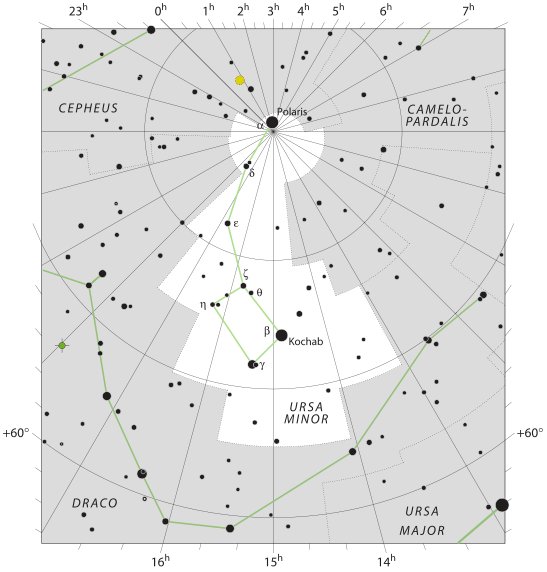 |
|
VISIBLE CLOSE TO
THE FULL MOON: |
|
April 29 |
30 |
May 1 (11 * 11) |
2 |
3 |
|
μ
Arietis (39.4), HEAD OF THE FLY = 35 Arietis
(39.6),
KAFFALJIDHMA (Part of a Hand) =
γ
Ceti,
θ
Persei (39.8)
*363.0
= *39.4 - *41.4 |
π
Ceti,
ο
Arietis (40.0),
ANGETENAR (Bend in the River) =
τ¹ Eridani,
μ Ceti (40.2),
RIGHT WING = 39 Arietis
(40.9) |
Bharani-2 (Yoni) /
Stomach-17 (Pheasant)
π
Arietis (41.2),
MIRAM (Next to the Pleiades) =
η
Persei
(41.3),
BHARANI = 41 Arietis (41.4),
τ²
Eridani,
σ
Arietis (41.7) |
TA LING
(Great Mound) = τ Persei (42.4)
*1.0 = *42.4 - *41.4 |
ρ
Arietis (43.0),
GORGONEA SECUNDA =
π
Persei
(43.5),
ACAMAR (End of the River) =
θ
Eridani
(43.6),
ε
Arietis (43.7),
λ
Ceti (43.9)
DENEBOLA (β Leonis) |
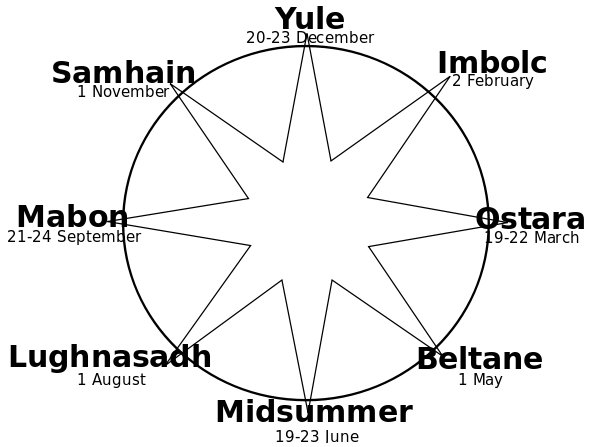 |
 |
 |
 |
 |
 |
 |
 |
|
Bb3-19 |
Bb3-20 |
Bb3-21 |
Bb3-22 (100) |
Bb3-23 |
Bb3-24 |
Bb3-25 (524) |
| E
tagata hakatu ki to
ika e vaha te ika |
ma te
ua |
kua pua te hahine |
kua tere ko to haga |
ki te
tagata haga
|
ki tona mea ke -
kua oho koia ki te haga |
mai moe koia ki te
mago - kua haga i
tona mea ke |
|
Nov 3 |
4 |
5 |
6 (310) |
7 |
8 |
9 |
|
ω
Bootis (227.2),
NEKKAR (Herdsman) =
β
Bootis
(227.3),
σ
Librae (227.5),
π²
Oct.
(227.7),
NADLAT (Mean Little Ones) = ψ Bootis
(227.8), π Lupi (227.9) |
15h (228.3)
ZUBEN HAKRABIM = ν Librae
(228.3), λ Lupi (228.9) |
ω
Oct. (229.3),
ι
Librae (229.6),
κ
Lupi (229.7),
ζ
Lupi (229.8) |
Al Zubānā-14b (Claws)
χ
Bootis (230.3),
PRINCEPS =
δ
Bootis
(230.6),
ZUBEN ELSCHEMALI (Northern Claw) =
β
Librae
(230.8) |
μ
Lupi,
γ
Tr. Austr.
(231.3), ο Librae (231.8) |
ο
Cor. Borealis (232.0),
δ
Lupi (232.1),
φ¹,
ν²
Lupi (232.2),
ν¹
Lupi (232.3),
ε
Lupi (232.4),
φ²
Lupi (232.5),
PHERKAD (The Dim One of the Two Calves) =
γ
Ursae Min.
(232.6),
ε
Librae (232.7),
η
Cor. Borealis (232.8),
υ
Lupi (232.9)
*191.0 = *232.4 - 41.4 |
ALKALUROPS (The Herdsman's Lance) =
μ
Bootis
(233.1),
ED ASICH (Male Hyena) =
ι
Draconis
(233.2) |
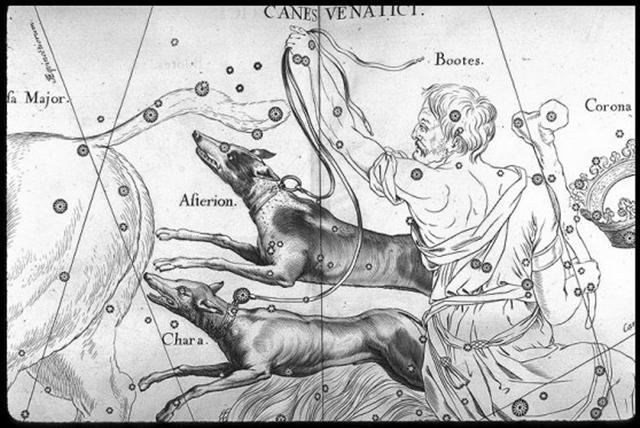 |
|
VISIBLE CLOSE TO
THE FULL MOON: |
|
MENKAR (The Nose) =
α
Ceti
(44.7) |
3h (45.7)
GORGONEA TERTIA =
ρ
Persei
(45.1),
ALGOL (The Demon) =
β
Persei
(45.9) |
ι
Persei (46.1),
MISAM (Next to the Pleiades) =
κ
Persei
(46.2),
GORGONEA QUARTA =
ω
Persei
(46.7),
BOTEIN (Pair of Bellies) =
δ
Arietis
(46.9) |
ζ Arietis (47.7) |
ZIBAL (Young Ostriches) =
ζ
Eridani (48.0),
κ
Ceti (48.9) |
τ Arietis (49.7) |
ALGENIB
PERSEI = α Persei (50.0), ο Tauri (50.2), ξ Tauri (50.8)
GIENAH (γ Corvi) |
|
*44 = *409 |
*410 |
*411 |
*412 |
*48 = *413 |
→ BHARANI |
*50 |
 |
 |
 |
 |
 |
 |
 |
|
Bb3-26 (104) |
Bb3-27 |
Bb3-28 |
Bb3-29 (107) |
Bb3-30 |
Bb3-31 (530) |
(18 * 29½) |
|
ko te
marama kua haga i tona mea ke |
ma te hakaua |
koia kua haga i to
kava |
kua haati ia e
kava |
ko te
kava o Motoipua |
ko te marama kua haga i tona mea
ke |
o te
kava kua haati |
|
Kava. 1. Sour; salty: vai kava,
saltwater, sea; te kava o te haíga, acrid underarm smell;
tagata kava - tagata kakara i te kava, man with smelly armpits.
2. He-kava te haha, to be thirsty. 3. To turn sour, to become
embittered, bad-tempered, exasperated (used with manava):
tagata manava kava, bad-tempered, angry man. Vanaga. Bitter,
salt; vai kava, brackish water; hakakava, to embalm;
kavakava, acid, sharp, bitter, salt, spiritous, vinegar,
poisonous, disagreeable; akavakava, to make sharp;
hakakavakava, to make acid. P Pau.: kava, disagreeable to
the taste; kavakava, acid, sharp. Mgv.: kava, to be
bitter, sour, acid, salt. Mq.: kava, bitter. Ta.: ava,
bitter, acid, salt. Kavahia: 1. Comfort, comfortable, to
feast; hakakavahia, comfort, comfortable. 2. Repulsive (of
food), disgusted; hakakavahia, repulsion. Kavakava,
rib; moi kavakava, a house god G. P Mgv.: vakavaka,
the breast. Mq.: vakavaka, vaávaá, rib. Ma.:
wakawaka, parallel ridges. We shall need all the available
material in order to determine the germ sense of this word. Sa.:
va'ava'a, the breast-bone of a bird; fa'ava'a, the frame
as of a slate. To.: vakavaka, the side. Fu.: vakavaka,
the side below the armpit. Ha.: hoowaa, to make furrows. In
all these we may see the idea of ridge or depression, or of both, as
primal (Rapanui, Samoa, Marquesas, Maori, Hawaii), and as secondary
the part of the body where such appearances is common (Mangareva,
Tonga, Futuna). Churchill. Mgv.: kava, the pepper plant and
the drink made therefrom. Ta.: ava, id. Mq.: kava, id.
Sa.: 'ava, id. Ma.: kawa, a pepper. Kavakava, a
fish. Sa.: 'ava'ava, id. Kavapui, a tree. Ta.:
avapuhi, a fragrant plant. Mq.: kavapui, wild ginger.
Sa.: 'avapui, id. Ha.: awapuhi, id. Churchill. Mq.:
ava, a small fish of sweet water. Sa.. 'ava'ava, a small
fish. Ha.: awa, a fish. Kakava, burnt. Sa.: 'a'ava,
very hot. Churchill.
 |
|
Nov 10 (314) |
11 |
12 |
13 |
14 |
15 |
16 (320) |
|
NUSAKAN (Pauper's Bowl) = β Cor. Bor.
(234.0), κ¹ Apodis (234.3), ν Bootis (234.7), ζ Librae (234.9)
|
θ Cor. Borealis (235.3), γ Lupi (235.6),
GEMMA = α Cor. Bor.,
ZUBEN ELAKRAB = γ Librae, QIN = δ Serpentis, ε Tr. Austr.
(235.7), μ Cor. Borealis (235.8), υ Librae (235.9)
SIRRAH (α
Andromedae) |
φ
Bootis (236.2), ω Lupi, τ Librae (236.3), ψ¹ Lupi (236.7), ζ Cor.
Borealis (236.9) |
κ
Librae (237.2),
ι
Serpentis (237.4),
ψ²
Lupi,
ρ
Oct.
(237.5), γ Cor. Borealis, η Librae (237.7), COR
SERPENTIS = α Serpentis
(237.9)
*196.0 = *237.4 - *41.4 |
π
Cor. Borealis,
UNUK ELHAIA (Necks of the Serpents) =
λ
Serpentis
(238.1),
CHOW =
β
Serpentis
(238.6) |
κ
Serpentis (239.3),
δ
Cor. Borealis,
TIĀNRŪ =
μ
Serpentis
(239.5),
χ
Lupi, (239.6),
ω
Serpentis (239.7),
BA (= Pa) =
ε
Serpentis,
χ
Herculis (239.8).
κ
Cor.
Borealis, ρ Serpentis (239.9) |
λ
Librae (240.0),
β
Tr. Austr. (240.3),
κ
Tr. Austr. (240.4),
ρ
Scorpii (240.8)
*199.0 = *240.4 - *41.4 |
|
... In other words, the ancient
Druidic religion based on the oak-cult will be swept away by
Christianity and the door - the god Llyr - will languish forgotten
in the Castle of Arianrhod, the Corona Borealis. This helps
us to understand the relationship at Rome of Janus and the White
Goddess Cardea who is ... the Goddess of Hinges who came to Rome
from Alba Longa. She was the hinge on which the year swung - the
ancient Latin, not the Etruscan year - and her importance as such is
recorded in the Latin adjective cardinalis - as we say in
English 'of cardinal importance - which was also applied to the four
main winds; for winds were considered as under the sole direction of
the Great Goddess until Classical times ... |
|
VISIBLE CLOSE TO
THE FULL MOON: |
|
σ
Persei (51.6) |
No
star listed (52) |
ψ
Persei (53.1)
ACRUX (α
CRUCIS) |
δ
Persei (54.7) |
Al Thurayya-27 (Many Little Ones)
/
Krittikā-3 (Nurses of Kārttikeya)
/
TAU-ONO (Six Stones)
ATIKS =
ο
Persei, RANA (Frog) =
δ
Eridani
(55.1),
CELAENO (16 Tauri), ELECTRA (17), TAYGETA (19),
ν
Persei (55.3), MAIA (20), ASTEROPE (21), MEROPE (23)
(55.6) |
Hairy Head-18 (Cockerel) /
Temennu-3 (Foundation Stone)
ALCYONE
(56.1),
PLEIONE (28 Tauri), ATLAS (27 Tauri)
(56.3) |
MENKHIB
(Next to the Pleiades =
ζ
Persei
(57.6)
PORRIMA (γ
Virginis) |
|
*416 |
*417 |
*418 |
*419 |
*55 = *408 + *12 |
*56 = *421 |
*422 |
And then Metoro used a Capital letter (Motoipua) also to
indicate where the Full Moon
reached the Pleiades.
Moto. 1. Pau.:
moto, fist, a blow. Mgv.: moto, a blow of the fist.
Ta.: moto id. Mq.: moto, to box, to spar. Sa.:
moto, a blow of the fist. Ma.: moto, id. 2. Mgv.:
moto, unripe, green, raw. Sa.: moto, green, unripe.
Churchill.
Toi. Ta.:
Alphitonia zizyphoidea. Mq.: toi, a
climbing plant. Sa.: toi, a tree. Churchill. Mq.:
toitoi, true, right, sincere. Ha.: koikoi,
substantial, honorable. Churchill.
Ipu. Gourd (as a container): ipu kaha; abdomen of
a lobster: ipu ûra. Vanaga.
Pua. 1. A zingiberacea (plant of which few
specimens are left on the island). 2. Flower: pua ti, ti
flower, pua taro, taro flower, pua maúku pasture
flower; pua nakonako, a plant which grows on steep slopes
and produce red, edible berries. 3. Pua tariga (or
perhaps pu'a tariga), anciently, hoops put in earlobes.
4. The nanue fish when young and tender. Puapua,
summit, top, upper part; te puapua o te maúga, the top of
the mountain; te puapua kupega, the upper part of a
fishing net. Vanaga. Pu'a. 1. (Modern form of pu'o),
to cover up something or oneself, to put on; ka-pu'a te ha'u,
put on your hat; ka-pu'a-mai te nua, cover me up with
a blanket. 2. To respond to the song of the first group of
singers; to sing the antistrophe; he-pu'a te tai. 3. To
help; ka-pu'a toou rima ki a Timo ite aga, help Timothy
with the work. 4. Pu'a-hare, to help a relative in war or
in any need; ka-oho, ka-pu'a-hare korua, ko ga kope, go,
give your relative a hand, lads. 5. To speak out in someone's
favour; e pu'a-mai toou re'o kia au, speak in my favour,
intercede for me. Pu'apu'a, to hit, to beat. Vanaga. 1.
Flower, ginger, soap; pua mouku, grass. 2. To grease, to
coat with tar, to pitch; pua ei meamea, to make yellow.
Puapua, a piece of cloth. Mgv.: pua, a flower,
turmeric, starchy matter of the turmeric and hence soap. Mq.:
pua, a flower, soap. Ta.: pua, id. Ma.: puapua,
cloth wrapped about the arm. Churchill.
Furthermore, we should notice he used the exact same words for the
beginning and the end of those 6 days which were preceding day
314 + 6 = 320 (→ *320 → Dramasa,
the South Pole star).
 |
*11 |
 |
*15 |
 |
|
Bb3-5 (83) |
Bb3-16 (94) |
Bb3-31
(530) |
| ki te henua |
ki to toa |
ko te marama kua haga i tona mea
ke |
|
April 20 (110) |
May 1 (121) |
May 16 (136) |
|
HAMAL
(*30) |
BHARANI (*41.4) |
ALCYONE (*421) |
|
*26 / *15 * 360 = 624
= 364 + 260
= 360 + 264 = 390 + 234 |
|
... Strassmeier and Epping, in their
Astronomishes aus Babylon, say that there its stars formed
the third of the twenty-eight ecliptic constellations, -
Arku-sha-rishu-ku, literally the Back of the Head of
Ku, - which had been established along that great circle
milleniums before our era; and Lenormant quotes, as an
individual title from cuneiform inscriptions, Dil-kar,
the Proclaimer of Dawn, that Jensen reads As-kar, and
others Dil-gan, the Messenger of Light. George Smith
inferred from the tablets that it might be the Star of the
Flocks; while other Euphratean names have been Lu-lim,
or Lu-nit, the Ram's Eye; and Si-mal or Si-mul,
the Horn star, which came down even to late astrology as the
Ram's Horn. It also was Anuv, and had its
constellation's titles I-ku and I-ku-u, - by
abbreviation Ku, - the Prince, or the Leading One, the
Ram that led the heavenly flock, some of íts titles at a
different date being applied to Capella of Auriga. Brown
associates it with Aloros, the first of the ten mythical kings
of Akkad anterior to the Deluge, the duration of whose reigns
proportionately coincided with the distances apart of the ten
chief ecliptic stars beginning with Hamal, and he deduces from
this kingly title the Assyrian Ailuv, and hence the
Hebrew Ayil; the other stars corresponding to the other
mythical kings being Alcyone, Aldebaran, Pollux, Regulus, Spica,
Antares, Algenib, Deneb Algedi, and Scheat ... |
... Called the winds to work the
bellows // To the utmost of their power. // Then the winds arose
in fury, // Blew the east wind, blew the west wind, // And the
south wind yet more strongly, // And the north winds howled and
blustered. Thus they blew one day, a second, // And upon the
third day likewise. // Fire was flashing from the windows, //
From the doors the sparks were flying // And the dust arose to
heaven, // With the clouds the smoke was mingled.
Then again smith Ilmarinen, // On the evening of the
third day, // Stooped him down, and gazed intently // To the
bottom of the furnace, // And he saw the Sampo forming, //
With its many-coloured cover.
Thereupon smith Ilmarinen, // He the great primeval
craftsman, // Welded it and hammered at it, // Heaped
his rapid blows upon it, // Formed with cunning art the
Sampo.
And on one side was a corn-mill, // On another side a
salt-mill, // And upon the third a coin-mill.
Now was grinding the new Sampo, // And revolved the
pictured cover, // Chestfuls did it grind till evening,
// First for food it ground a chestful, // And another
ground for barter, // And a third it ground for storage.
Now rejoiced the Crone of Pohja, // And conveyed the
bulky Sampo, // To the rocky hills of Pohja, // And
within the Mount of Copper, // And behind nine locks
secured it.
There it struck its roots around it, // Fathoms nine
in depth that measured, // One in Mother Earth
deep-rooted, // In the strand the next was planted, //
In the nearest mount the third one ...
|
